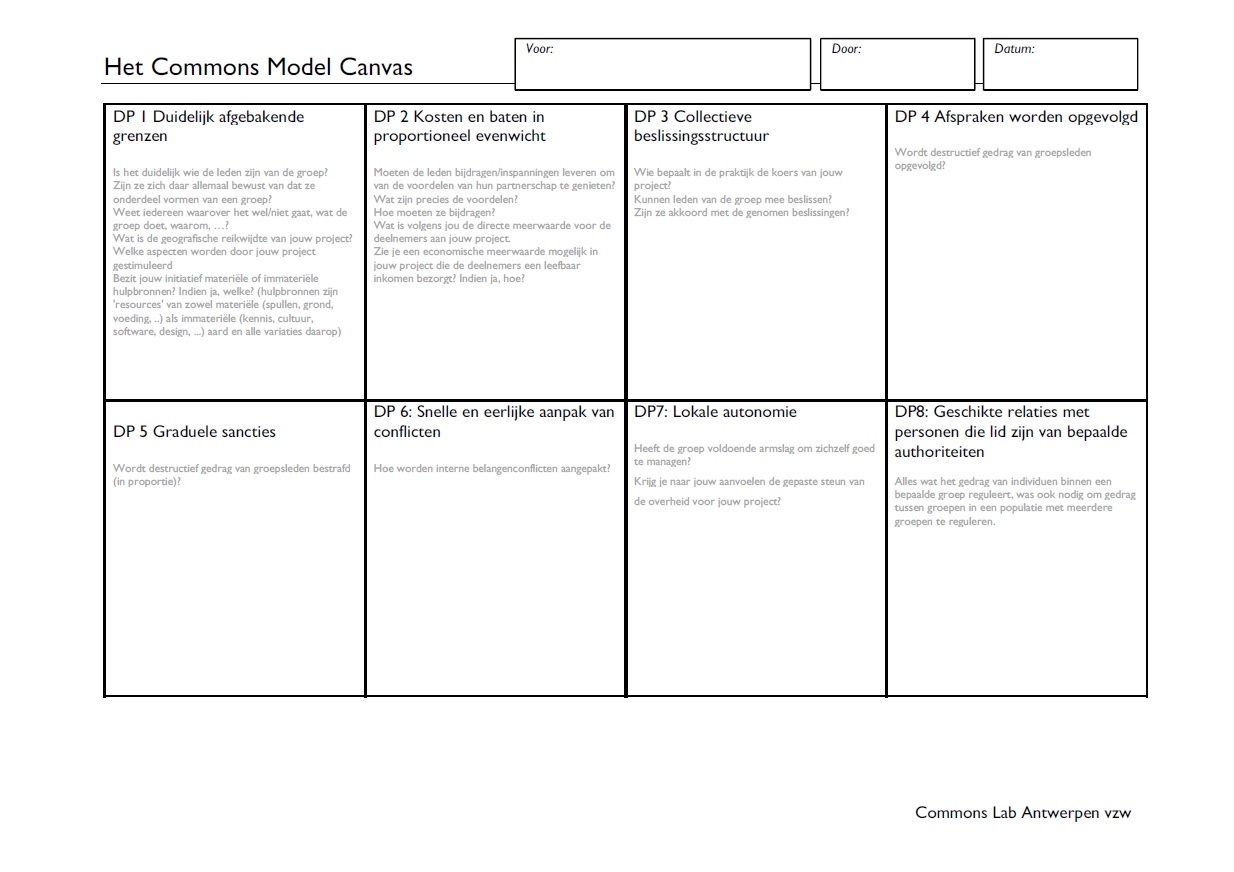Commons designprincipes Elinor Ostrom
Een common of gemeengoed samen beheren is niet evident. We merken dat alle dagen adhv van de vragen die we krijgen vanuit gans Vlaanderen. Zowel van heel diverse (burger)initiatieven. Maar ook van ambtenaren, politici, ondernemers. Heel veel initiatieven en samenwerkingsverbanden vliegen uit de startblokken maar lopen vaak toch uit op een 'tragedie'. Zo is de idee gegroeid om een canvas (cf. Business Model Canvas) te gaan ontwikkelen dat commoners kunnen gebruiken als zelfevaluatie instrument.
We hebben snel een ruwe 1.0 versie gemaakt. Wie zin en tijd heeft om de 2.0 versie te maken, laat ons iets weten! Je kan meewerken via deze link; https://drive.google.com/open?id=1Cjw4IxMgeLvHTeGcAayeulspcqgqTr43
Commons model canvas versie 1.0
Het Commons Model Canvas is gebaseerd op de 8 design principes van Elinor Ostrom:
Clearly defined boundaries (DP1) meant that members knew they were part of a group and what the group was about (e.g., fisherman with access to a bay or farmers managing an irrigation system).
Proportional equivalence of costs and benefits (DP2) meant that members had to earn their benefits and couldn’t just appropriate them.
Collective choice arrangements (DP3) meant that group members had to agree upon decisions so nobody could be bossed around.
Monitoring (DP4) and
graduated sanctions (DP5) meant that disruptive self-serving behaviors could be detected and punished.
Fast and fair conflict resolution (DP6) meant that the group would not be torn apart by internal conflicts of interest.
Local autonomy (DP7) meant that the group had the elbow room to manage its own affairs.
Appropriate relations with other tiers of rule making authority (DP8) meant that everything regulating the conduct of individuals within a given group also was needed to regulate conduct among groups in a multi group population.

